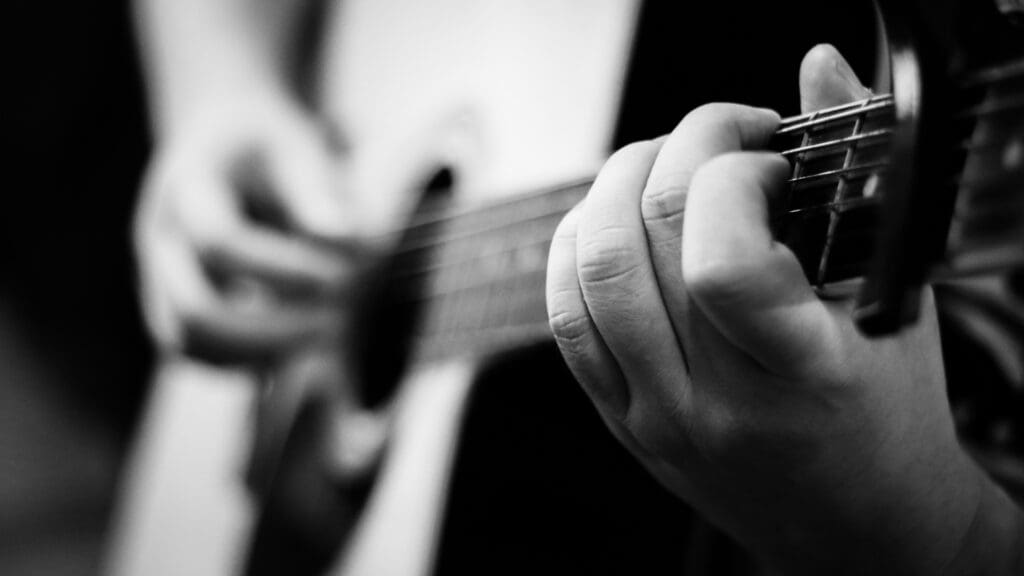
Music is a universal language that speaks to our souls, evoking emotions and creating connections. And at the heart of many beautiful melodies lies the A major chord. Whether you’re a beginner or an experienced musician, understanding and mastering this fundamental chord can open up a world of musical possibilities.
In this article, we will delve into the intricacies of the A major chord, exploring its structure, variations, and practical applications. So, grab your guitar or sit down at the piano and join us as we embark on a musical journey.
What Is the A Major Chord?
The A major chord, a fundamental triad in music theory, consists of three specific notes: A, C♯, and E. It derives its bright and uplifting sound from its foundation on the tonic of the A major scale. As a result, the chord offers a sense of stability and resolution.
The structure of the A major chord follows a precise pattern: a major third, which spans four half steps between the root note (A) and the second note (C♯), and a minor third, spanning three half steps between the second note (C♯) and the third note (E). These intervals create a harmonious combination of tones, resulting in the distinctive and captivating sound that characterises the chord.
When played on a musical instrument, A major adds brightness and energy to a composition. It’s a common feature of various genres, including pop, rock, and classical, and serves as a cornerstone in many songs. Its versatility and pleasing sound make it a popular choice for musicians and composers alike.
Playing the A Major Chord on the Guitar
For guitarists, playing A major is relatively straightforward. Here’s a step-by-step guide:
- Place your first finger on the second fret of the fourth string (D string).
- Position your second finger on the second fret of the third string (G string).
- Press down your third finger on the second fret of the second string (B string).
Strumming from the A string (the fifth string) downward, let the notes ring out, creating a harmonious blend of A, E, and C♯. Experiment with different strumming patterns and variations to add your personal touch to this versatile chord.
Playing the A Major Chord on the Piano
You can also play A major on the piano using three fingers:
- Place your thumb on the A note (the root) in the bass clef.
- Position your middle finger on the C♯ note (the third) in the treble clef.
- Press down your pinky finger on the E note (the fifth), one octave higher than the root.
Play all three notes simultaneously on your instrument to create a rich and full sound. Just like with a guitar, you can experiment with different rhythms and add embellishments to customise the chord to your unique musical style. This lets you infuse your playing with personal expression and create a captivating musical experience.
Exploring Chords in the Key of A Major
Understanding the chords within a particular key can significantly enhance your musical composition skills. In the key of A major, the following chords harmonise with A major:
- I: A major (A – C♯ – E)
- ii: B minor (B – D – F♯)
- iii: C♯ minor (C♯ – E – G♯)
- IV: D major (D – F♯ – A)
- V: E major (E – G♯ – B)
- vi: F♯ minor (F♯ – A – C♯)Chord vii: G♯ diminished (G♯ – B – D)
By skillfully incorporating these chords into your compositions, you can unlock the power to create captivating musical progressions that effortlessly evoke a wide range of moods and emotions. Whether you desire a joyful and uplifting melody or a melancholic and introspective tune, carefully selecting and experimenting with different chord combinations and inversions will enable you to infuse your music with a profound sense of depth and complexity.
So, let your creativity soar as you explore the limitless possibilities these chords bring to your musical journey.
The Role of the A Major Chord in Music Theory
In music theory, the A major chord holds great significance as the tonic chord (chord I) in the key of A major. As the foundational pillar of a musical piece, the A major chord sets the stage for intricate melodic exploration and harmonious development. Its rich and resonant sound creates a sense of stability and resolution when skillfully combined with other chords in the key, such as the dominant chord (chord V) or the subdominant chord (chord IV).
With its distinct tonal qualities and expressive potential, the A major chord adds depth and complexity to compositions, captivating musicians and listeners alike.
Popular Songs
A major finds its way into numerous songs across various genres. Here are a few examples that showcase the versatility of this chord:
Backstreet Boys – “I Want It That Way” (1999)
“I Want It That Way” by Backstreet Boys is a timeless classic that showcases A major prominently in its infectious chorus. This chord choice adds a catchy and uplifting feel to the song and perfectly complements the heartfelt message of longing for someone.
With its captivating melodies and passionate lyrics, this iconic track continues to captivate listeners of all ages, solidifying its place in music history.
Linkin Park – “Numb” (2003)
Enhancing the melancholic and reflective tone of “Numb” by Linkin Park is the use of the A major chord, resonating with a hauntingly soulful quality. The poignant lyrics and delicate instrumental arrangement evoke a profound longing and vulnerability, captivating the listener’s emotions and drawing them into a deeply introspective journey.
With its raw and honest expression, “Numb” stands as a testament to the power of music to touch the depths of our souls and connect us on a profound level.
Simple Minds – “Don’t You (Forget About Me)” (1985)
The A major chord serves as the strong and unwavering backbone of this iconic 80s hit by Simple Minds. Its beautifully crafted melody effortlessly weaves a tapestry of nostalgia, invoking memories of a cherished past. As the notes resonate, they carry a message of unyielding hopefulness. The song reminds us never to forget someone dear, their presence forever etched in our hearts.
Daft Punk – “Get Lucky” (2013)
“Get Lucky” by Daft Punk featuring Pharrell Williams is a perfect example of how A major’s lively and vibrant tonality can create a groovy and infectious sound. From the funky guitar riffs to the pulsating rhythm, this iconic song takes you on a musical journey filled with joy and irresistible energy. It’s impossible to resist dancing along and immersing yourself in its infectious groove!
Fleetwood Mac – “Say You Love Me” (1975)
In this timeless and enchanting love song, the iconic band Fleetwood Mac employs the melodious A major chord to evoke a sense of sincerity, passion, and vulnerability. Through the heartfelt lyrics and captivating melodies, they earnestly plead for affection, creating an emotional connection that resonates deeply with listeners.
The skilful use of A major adds a touch of warmth and richness to the music. Moreover, it enhances the overall enchanting experience of this classic masterpiece.
Conclusion
Mastering the A major chord is crucial in expanding your musical repertoire. Its bright and uplifting sound, along with its versatility, makes it a valuable tool for musicians across different genres. By understanding the A major chord’s structure, variations, and practical applications, you can unlock a world of musical creativity. So, grab your instrument, and let the beauty of the A major chord inspire your musical journey.










